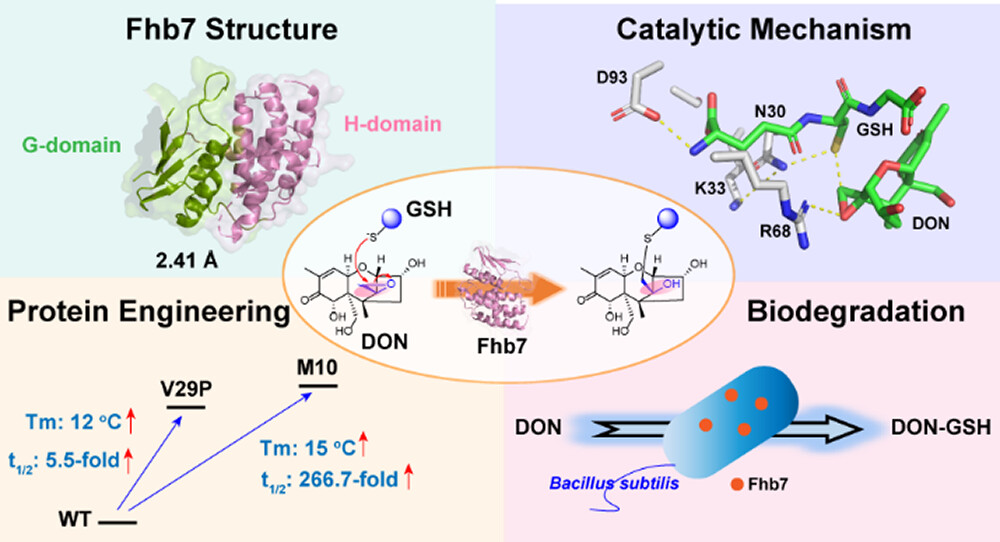We just published the first structure of Fhb7 at 2.41 Å and revealed a unique catalytic mechanism of epoxide opening transformation in GST family proteins.
In the era of global climate change, the increasingly severe Fusarium head blight (FHB) and deoxynivalenol (DON) contamination have caused economic losses and brought food and feed safety concerns. Recently, an FHB resistance gene Fhb7 coding a glutathione-S transferase (GST) to degrade DON by opening the critical toxic epoxide moiety was identified and opened a new window for wheat breeding and DON detoxification. However, the poor stability of Fhb7 and the elusiveness of the catalytic mechanism hinder its practical application. Herein, we report the first structure of Fhb7 at 2.41 Å and reveal a unique catalytic mechanism of epoxide opening transformation in GST family proteins. Furthermore, variants V29P and M10 showed that 5.5-fold and 266.7-fold longer half-life time than wild-type, respectively, were identified. These variants offer broad substrate scope, and the engineered biosafe Bacillus subtilis overexpressing the variants shows excellent DON degradation performance, exhibiting potential at bacterium engineering to achieve DON detoxification in the feed and biomedicine industry. This work provides a profound mechanistic insight into the enzymatic activities of Fhb7 and paves the way for further utilizing Fhb7-related enzymes in crop breeding and DON detoxification by synthetic biology.
